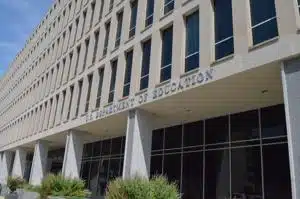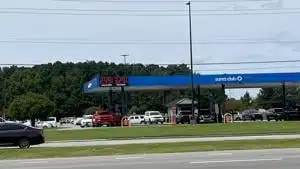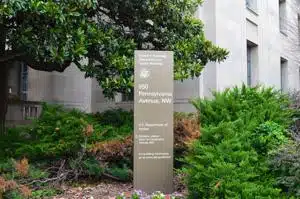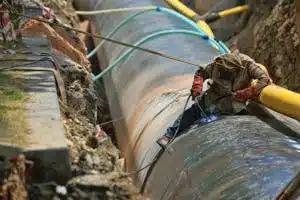(The Center Square) – A new analysis has found California gasoline prices could rise to $8.44 per gallon by the end of 2026 after the pending closure of two refineries — one-fifth of the state’s refining capacity — and the onset of new state regulations.
California gas prices are the nation’s highest, at $4.78 per gallon for regular-grade gasoline Tuesday, per AAA.
The new study from University of Southern California professor Michael A. Mische examined California’s historical gas prices, oil supply and refining capacity, and modeled the likely impact of refinery closures and costly new fossil fuel and refinery fees and regulations.
“The shutdown of the two California-based refineries could possibly place the Golden State in a precarious economic situation and create a gasoline deficit potentially ranging from 6.6 million to 13.1 million gallons a day, as defined by the shortfall between consumption and production,” wrote Mische. “Reductions in fuel supplies of this magnitude will resonate throughout multiple supply chains affecting production, costs, and prices across many industries such as air travel, food delivery, agricultural production, manufacturing, electrical power generation, distribution, groceries and healthcare.”
“Based on current demand and consumption assumptions and estimates, the combined consequences of the 2025 Phillips 66 refinery closure and the April 2026 Valero refinery closure, together with the potential impact of legislative actions such as, but not limited to, the new LCFS standard, increase in excise taxes, Cap and Trade, SBX1-2, and ABX2-1, the estimated average consumer price of regular gasoline could potentially increase by as much as 75% from the April 23, 2025, price of $4.816 to $7.348 to $8.435 a gallon by calendar year end 2026,” continued Mische.
Mische said the high delta between California gas prices and that of other states is the result of state taxes and fees, and policies that have reduced in-state oil production and refining capacity faster than gasoline demand has fallen.
“Over the last 30 to 50 years, the California state excise tax on gasoline has increased by 253%, the number of motor vehicles has grown by 38%, and our population has increased by 24%,” Mische wrote. “Meanwhile, the number of refineries has declined by 56%, in-state oil field production has fallen by 63%, finished gasoline stocks have declined by 98%, in-state daily refinery capacity has decreased by 36%, average gasoline prices for all formulations have gone up by 253%, and imports of non-U.S. foreign oil increased 712%.
“Concurrently, a series of regulatory costs that have been layered onto refiners, distributors, and local operators have had a compounding effect on retail prices at the pump,” Mische said.
California regulators last year approved a new Low Carbon Fuel Standard, which requires producers of fuels that are more carbon-intensive than a rising standard to buy credits from producers of fuels that are less carbon-intensive than the standard.
The state says the program will increase fuel costs by $162 billion through 2046, while creating $105 billion in electric vehicle charging credits and $8 billion of hydrogen credits.
Most home EV charger purchasing agreements require homeowners to surrender their LFCS credits to the charger’s producer, meaning while homeowners pay for the chargers, energy and property to charge at, charger sellers will get the credits.
Senate Bill X1-2, which set a maximum profit margin for refiners, and Assembly Bill X2-1, which allows the state to set minimum inventory requirements for refineries and have final say over when refineries are allowed to shut down for essential maintenance, were called for by California Gov. Gavin Newsom. The bills passed during a special legislative session last year convened by Newsom for the sole purpose of passing refinery regulations.
Chevron and the governors of Arizona and Nevada, a Democrat and a Republican respectively, all warned the two bills would create fuel shortages and raise prices for Americans all across the region, as parts of the two states rely on California refineries for their fuel. In February, gas prices spiked across the region as California regulators blocked a refinery’s repairs for nearly two weeks after a fire erupted as the refinery prepared to shut down for essential maintenance.
In a late April letter, Newsom called on the California Energy Commission to “work closely with refiners on short- and long-term planning, including through high-level, immediate engagement, to help ensure that Californians continue to have access to a safe, affordable, and reliable supply of transportation fuels, and that refiners continue to see the value in serving the California market.”
California Republicans have responded by calling for Newsom to take immediate action to reverse his own regulations, and not pass the buck instead of waiting months for a report from the CEC.
“Your recent letter asked the CEC to provide recommendations by July 1 on how ‘refiners can profitably operate in California,’” wrote state Sen. Minority Leader Brian Jones, R-San Diego, in a letter. “But we do not have the luxury of time to wait for another report while closures proceed and prices climb.”
“Rather than relying on a lengthy bureaucratic process, I strongly urge you to work directly with California’s fuel producers and find immediate solutions that prevent further closures and ensure long-term energy stability,” continued Jones. “A few ideas worth exploring could include investment tax credits, and temporary or permanent relief from certain taxes and regulations.”



















































